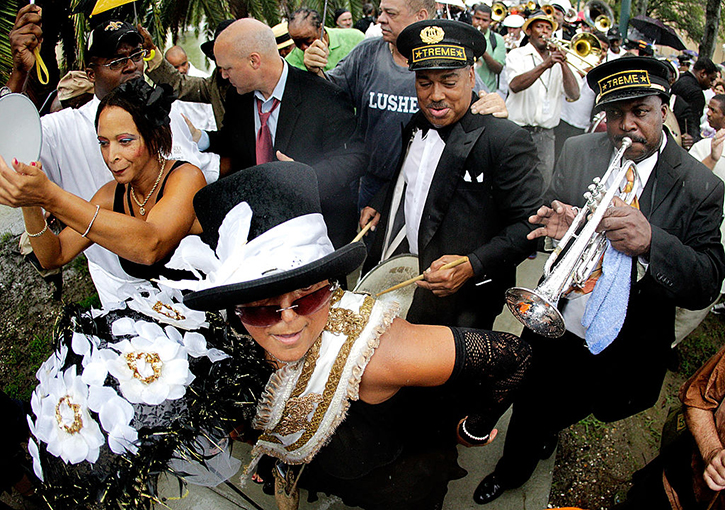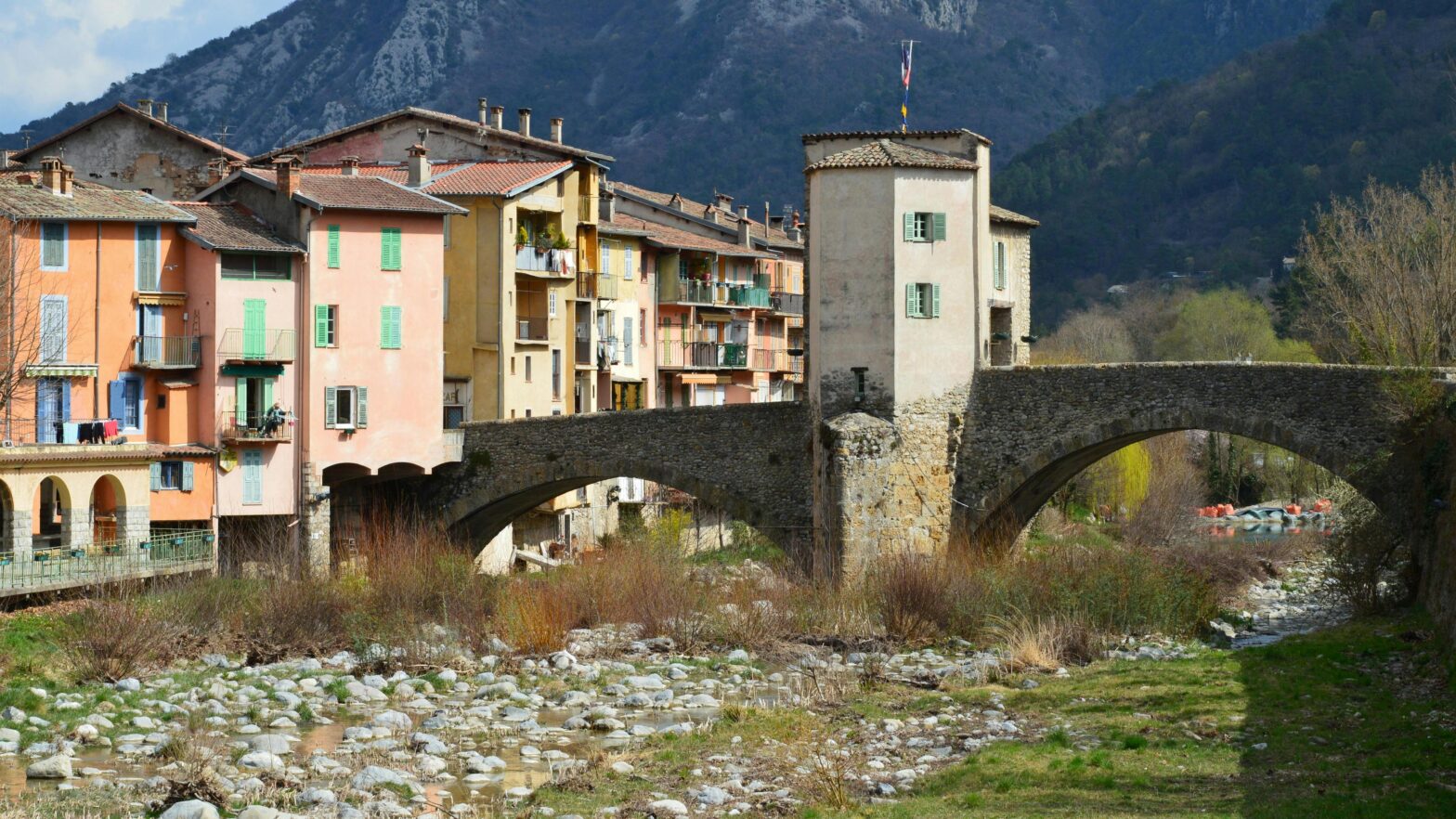The New Orleans tradition of jazz funerals became popular in the 1800s. The local memorial practice is a cultural tradition that ethnomusicologist and journalist Matt Sakakeeny referred to in his book Roll With It: Brass Bands in the Streets of New Orleans as the city’s “most sacred, profound, and traditional form of local Black culture.”
In a jazz funeral, family, friends, and loved ones of the deceased participate in a funeral procession originating at the church and ending at the burial site. The procession is led by the sounds of the accompanying brass band, traditionally comprised of trombones, saxophones, trumpets, tubas, and drums.
The emotions and body movements of participants follow the cues of the music. The procession begins slowly with a mournful and somber dirge and later, typically at the burial site, transforms into a lively and upbeat celebration.
Jazz music is understood to have originated in gatherings held by enslaved Blacks known as “ring shouts,” which took place on the outskirts of New Orleans in Congo Square.
According to J. David Maxson’s Southern Quarterly article, “Just a Closer Walk with Thee”: Jazz Funerals, Second Lines, and Laying Hurricane Katrina to Rest, in Congo Square, enslaved Black people gathered every Sunday, the free day Louisiana’s Code Noir granted them to participate in the mandated European practice of Christian worship.
They sang and danced to African drum music and thus, jazz was born. These gatherings were a part of the limited opportunity the enslaved had to convene. Similarly, they were allowed to gather to hold their own Christian burials.
“For slaves whose ability to congregate was severely constrained, funerary rituals became an opportunity, similar to Congo Square, to participate in ‘public performances to consolidate a sense of community,'” said Maxson.
Jazz funerals have also been seen as a unique way in which Black communities chose to honor their dead in a manner that differed greatly from Eurocentric standards in a city where only the well-to-do could afford to memorialize their dead with large, fancy monuments and memorials.
As Maxson points out, “Jazz funerals simultaneously resist dominant forms of memorializing as they adapt to fit the needs of particular neighborhood-communities.”
In her American Ethnologist article Blackness and the Politics of Memory, Helen A. Regis said, “Unlike the cool and stationary cement, glass, and stone memorials of endowed buildings, the tactical memorials of New Orleans second liners are moving monuments made of flesh and blood.”
After the tragic mass loss of life New Orleans experienced with Hurricane Katrina, the city saw many commemorative jazz funerals, which some have referred to as “mock” or “staged” jazz funerals. Often held on the anniversary of the devastation, these funerals contain no deceased body, but commemorate a huge loss for various communities of the city.
Unfortunately, since the 1960s, staged second lines have been taking place in New Orleans as a form of cultural appropriation in which the traditionally Black custom has been performed as part of tourism draws in the French Quarter.
According to American studies scholar Eric Porter, jazz funerals and second lines have been pivotal in helping to rebuild New Orleans after the devastation of the storm, not only as far as its role in tourism, but also in helping residents cope with and heal from the trauma, and encouraging them to remain in the city.
As Maxson stated, “Jazz funerals offer a way of understanding the psychological and physical pain of bereavement in New Orleans and provide a model for the regeneration of the city and its people’s spirits.”
The practice of jazz funerals is one that has lasted the test of time and remains a major part of New Orleans’ Black culture today.
According to Sakakeeny, “The precariousness of life and the inevitability
of death ensure that the jazz funeral tradition remains unbroken; but just
as Louis Armstrong and his contemporaries incorporated jazz in the Jim
Crow era…young musicians have retrofitted the jazz funeral to resonate
with present-day experiences.”
Brass bands have remained in tune with the times and current generations of New Orleanians who uphold the tradition. Thus, it is not uncommon to hear today’s jazz funerals incorporating elements of R&B, hip-hop, reggae, or funk music into their performances.
Related: The Sound of New Orleans Music: From Jazz, Rhythm & Blues to Hip Hop and Bounce





